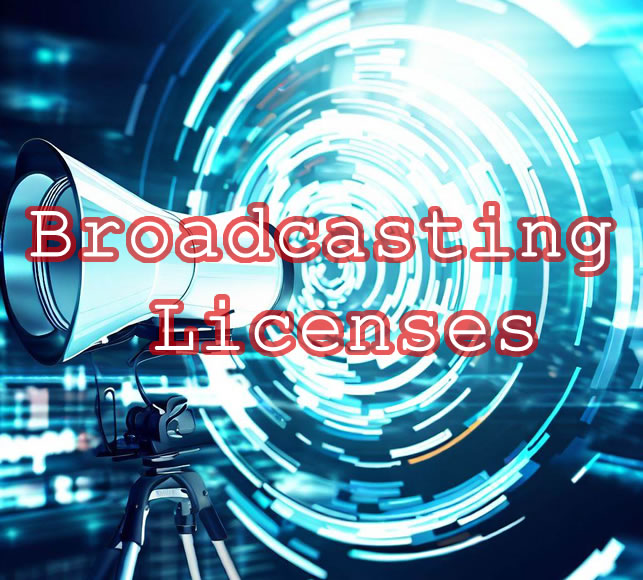
What is Broadcasting?
Broadcasting is the distribution of audio or visual content to a wide audience through various electronic media platforms. It involves the transmission of information, entertainment, or educational content to reach a large number of people simultaneously. Broadcasting allows for the dissemination of news, music, television shows, films, sports events, and other forms of media to viewers or listeners across different locations and demographics.
Traditionally, broadcasting was primarily associated with radio and television. Radio broadcasting involves the transmission of audio content, such as music, talk shows, news, and advertisements, through radio waves. It has been a popular medium for communication and entertainment since the early 20th century. Television broadcasting, on the other hand, utilizes visual and audio signals to transmit programs to televisions in households. It offers a more immersive experience, combining audiovisual elements to deliver a wide range of content, including news, documentaries, dramas, sitcoms, and live events.

With the advancement of technology and the widespread availability of the internet, broadcasting has expanded beyond traditional radio and television. Online streaming platforms have gained immense popularity, allowing users to access a vast array of content on-demand. Platforms like YouTube, Netflix, Hulu, and live streaming services enable broadcasters to reach global audiences instantly. Social media platforms have also become significant channels for broadcasting, with live videos and stories being shared by individuals, organizations, and media outlets.
Broadcasting serves several purposes. It serves as a medium for mass communication, enabling the dissemination of information, news, and current affairs to a broad audience. It facilitates entertainment, bringing diverse content like movies, TV shows, music, and live events into people’s homes. Broadcasting also plays a crucial role in education, with educational programs and documentaries providing valuable learning opportunities. Moreover, it serves as a platform for advertising and marketing, allowing businesses to promote their products and services to a wide consumer base.
Broadcasting Licenses for Typographic Fonts
Typographic fonts play a crucial role in the world of broadcasting, as they convey essential information to audiences in a visually appealing manner. However, using fonts without proper licenses can lead to legal and ethical issues. In this article, we will explore the significance of broadcasting licenses for typographic fonts, highlighting their importance in ensuring legal compliance, protecting intellectual property rights, maintaining brand consistency, and fostering a professional and engaging visual experience. Understanding the significance of these licenses will enable broadcasters to make informed decisions and uphold ethical standards in their font usage.
Legal Compliance
One of the primary reasons for obtaining broadcasting licenses for typographic fonts is to ensure legal compliance. Fonts are considered intellectual property and are protected by copyright laws. By using fonts without proper authorization, broadcasters risk infringing upon the rights of font designers and foundries. Broadcasting licenses grant the necessary permissions to use fonts in a specific context, such as television, radio, or online platforms, ensuring that the broadcaster is acting within the boundaries of the law.
Protecting Intellectual Property Rights
Broadcasting licenses also play a crucial role in protecting the intellectual property rights of font designers. Font creation requires time, effort, and creative skill. Font designers invest significant resources in developing unique and visually appealing typefaces. Acquiring a broadcasting license ensures that font designers are appropriately recognized and compensated for their work. It also encourages innovation in the field of typography, as designers are incentivized to create new and distinctive fonts, knowing that their intellectual property is protected.
Maintaining Brand Consistency
Brand consistency is a vital aspect of broadcasting, as it helps establish a recognizable identity for a network or program. Typography plays a crucial role in branding, as fonts convey the personality and tone of a brand. By obtaining a broadcasting license, broadcasters gain access to specific fonts that align with their brand guidelines. This consistency across different media platforms fosters a unified and professional image, enhancing audience recognition and loyalty.
Professional and Engaging Visual Experience
In the broadcasting industry, the visual experience is a critical component of engaging and captivating audiences. Typography significantly contributes to the overall aesthetic appeal of on-screen graphics, titles, and captions. Fonts that are properly licensed offer a wide range of options, enabling broadcasters to choose the most suitable typefaces for their content. Whether it’s a news broadcast, a sports event, or an entertainment program, using licensed fonts ensures high-quality typography that enhances the viewer’s experience.
Conclusion
Obtaining broadcasting licenses for typographic fonts is essential for broadcasters to ensure legal compliance, protect intellectual property rights, maintain brand consistency, and provide a professional and engaging visual experience. By recognizing the significance of these licenses, broadcasters can demonstrate ethical conduct, support font designers and foundries, and enhance the overall quality of their broadcasts. Adhering to licensing requirements not only helps avoid legal complications but also contributes to a vibrant and innovative typography ecosystem, benefiting both broadcasters and designers alike.

